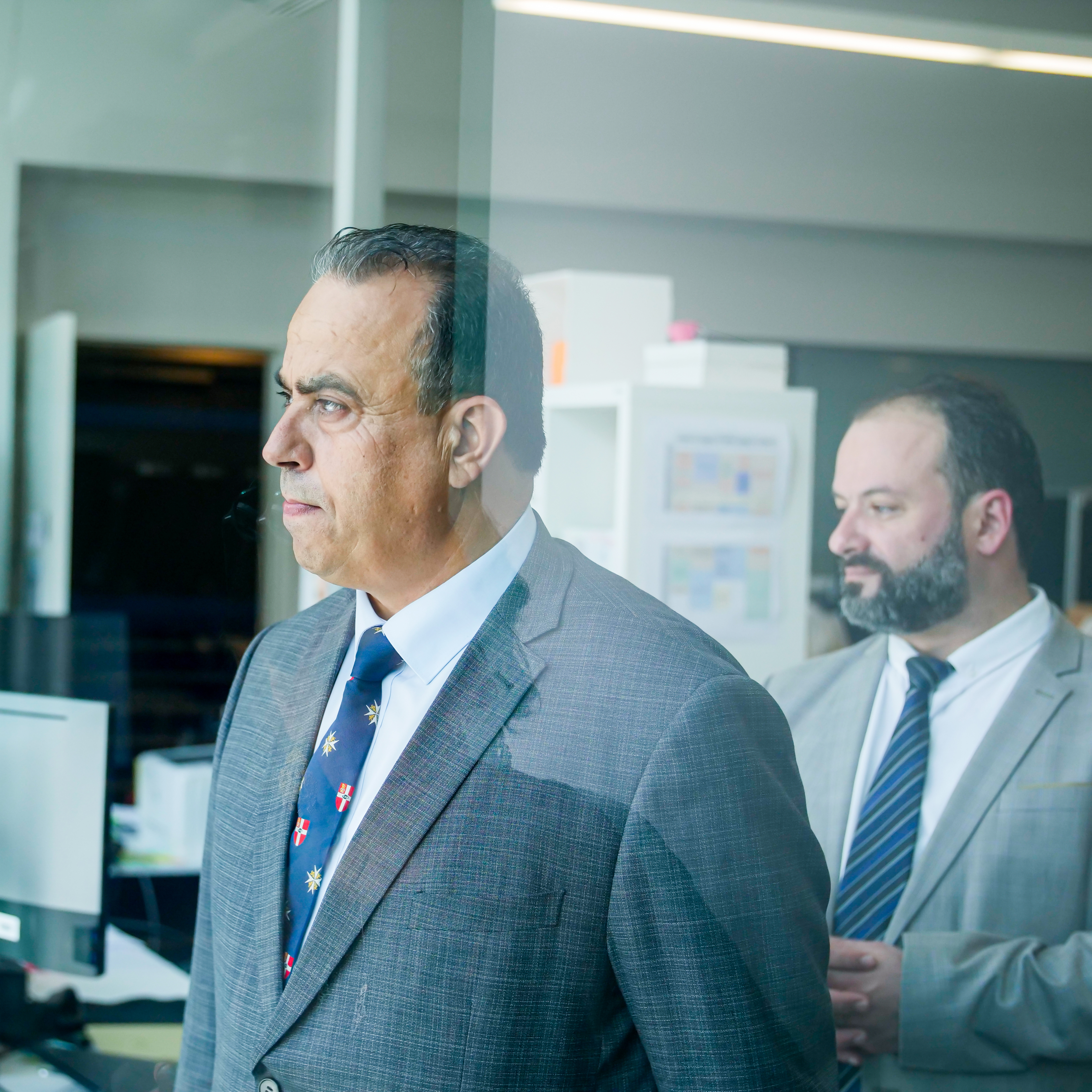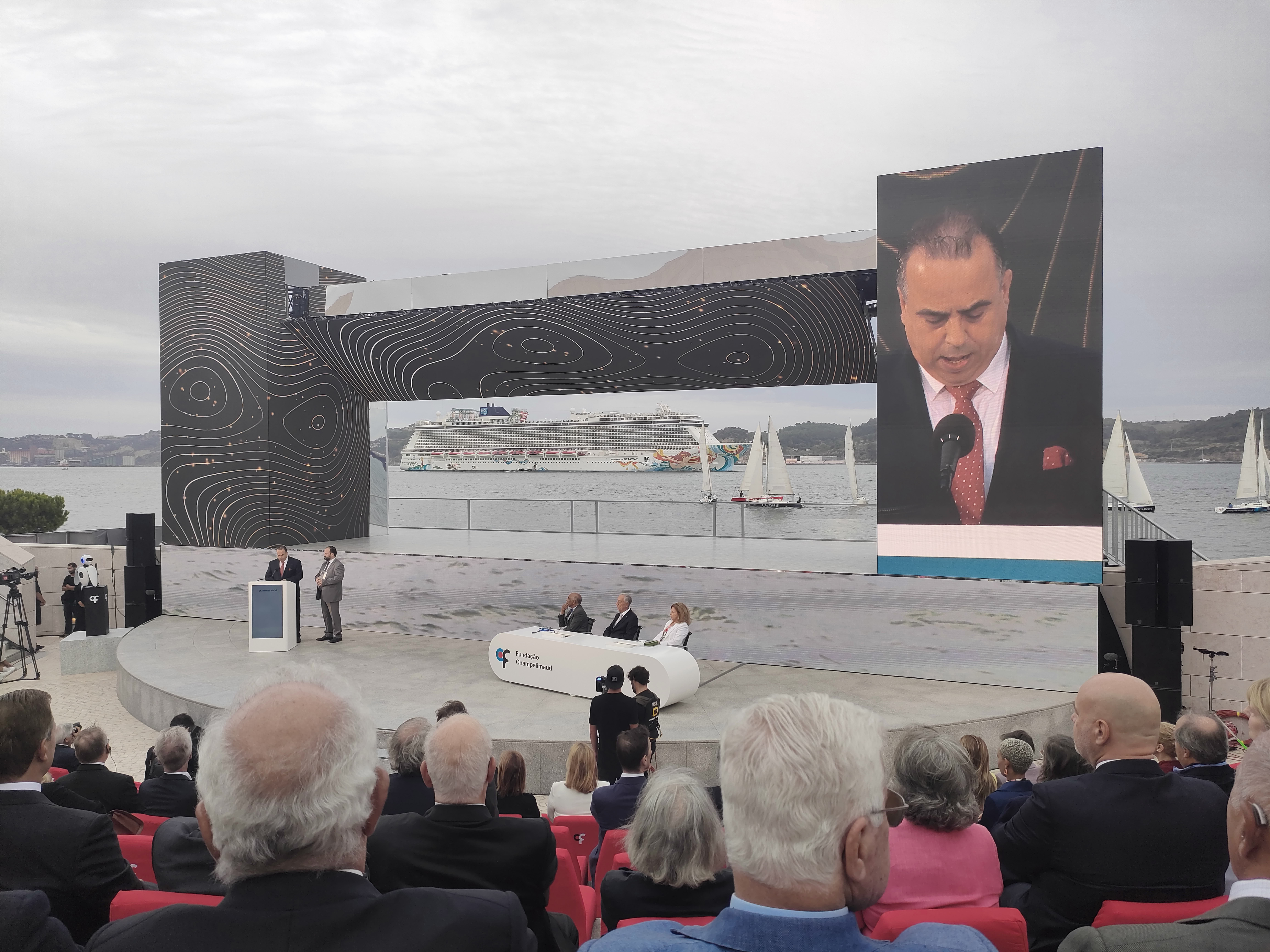In the midst of a territory that has long been a hotspot for armed confrontation and humanitarian instability, the St John of Jerusalem Eye Hospital Group (SJEHG) has managed to provide top quality eye care, as well as ophthalmic training to local medical professionals.
“For its commitment to providing essential eye care in a region marked by conflict”, the Group has now been recognized with the one-million-euro 2023 António Champalimaud Vision Award, the Champalimaud Foundation announced in a statement.
The SJEHG is actually the only hospital specialised in eye care in the region, where it has been present for 140 years – the first hospital having been established in Jerusalem by the British Order of St John in 1882, under Queen Victoria’s reign. Today, the Order is headed by King Charles III, with part of the SJEHG board located in London – and the CEO, senior management and operations set in the Middle East.
“We started with the hospital – the mother hospital – in Jerusalem, says Ahmad Ma’ali, current SJEHG’s CEO, who was in Lisbon just weeks ago, with his colleague David Dahdal, the Group’s Grants and Development Director, to receive the Award.
Starting in the 1990’s, hospital leadership decided that, for patients living in a context of territorial instability to be able to reach the facilities and receive eye care, services could not be centralised – and the SJEHG was born. Today, there is a hospital in Gaza that provides almost all services; one in the southern part of the West Bank, in Hebron; a medical center in the north of the West Bank, in Anabta; and mobile outreach services for both Gaza and the Westbank. There also two small clinics, one in the Old City of Jerusalem, and one outside the separation wall of Jerusalem.
“As for the mobile clinics, every day two teams of doctors and nurses load the van with equipment and travel to the West Bank or to Gaza, to isolated areas, refugee camps, and to Bedouin camps as well” explains Ma’ali. The mobile units provide primary eye care, do screening and primary treatment for patients, and those who require further treatment are referred to the base hospital or to one of the satellite centres in the West Bank.
The SJEHG is also the main provider of ophthalmic training for doctors and nurses in the region. “I was one of the nurses who trained at the hospital in 1992 and then I went to the University of Greenwich, in the UK, for further training” points out Ma’ali. He’s also obtained a Master's degree in Hospital Management and a PhD in Nursing.
Today the main hospital’s focus has shifted to providing a one year post-graduate diploma in ophthalmic nursing, “which is unique in the whole of the Middle East”, adds Ma’ali, “and we have been in negotiations and discussions with our Israeli colleagues for them to send their nurses to train with us because they don't have a specialisation in ophthalmic nursing”.
Ma’ali was the first Palestinian to have been appointed, in 2016, CEO of the Group. “I think I have changed the history of the hospital in many ways because of that”, he says.
The current total staff of the Group is of more than 270 employees: around 50 doctors, 92 nurses, 30 medical and paramedical technicians, the rest being support staff and administration. “We train our own doctors. We train our own nurses, and recruitment is usually from within the hospitals”, says Ma’ali.
The SJEHG treats 145,000 patients a year, mostly in ambulatory mode, since hospitalisation is rarely required for medical reasons; when patients stay at the hospital overnight, it is usually due to difficulties travelling back home. “But thanks to the satellite centers and hospitals” stresses Ma’ali, “very few patients now need to travel from Gaza to come to the Jerusalem hospital, negotiating all the checkpoints along the way. I would say 50% of the patients we see in Jerusalem are Israelis, Arab Israelis, Palestinian Israelis from Jerusalem, and the other 50% are from the West Bank”.
Cataracts, diabetes, hereditary eye diseases
An epidemiological study carried out by the SJEHG showed that the rate of blindness in Palestine is ten times higher than in the West. This is due to mobility issues, unemployment and poverty rates, as well as high levels of genetic eye diseases.
As in many other underserved parts of the world, the main cause of preventable blindness in Palestine are cataracts, according to SJEHG data from 2018. And indeed, out of the 6,900 operations undertaken every year, 3,000 are for cataracts.
The second leading cause is diabetic retinopathy, which has become the leading cause of preventable blindness in the working age group. This is because diabetes is highly prevalent in the region.
Undiagnosed diabetes is a problem relatively unique to Palestine, and perhaps to all of the Middle East. “People sometimes come to the hospital and you look at the back of their eye and you ask them, do you have diabetes?”, says Ma’ali. “And they say no. But you can see the changes already happening at the back of their eyes, which means that they have unknowingly had diabetes for the last five years at least.”
According to Ma’ali, this comes from a lack of understanding in the population, a lack of screening and a public primary health infrastructure that is not in place, a health awareness that almost doesn't exist. “We treat the aftermath because nobody's treating the diabetes. We deal with very aggressive diabetic retinopathy, performing surgery on the retina on a daily basis. And unfortunately, some of the cases are beyond our help, they come to us too late”.
But what is even more unique in this part of the world are eye diseases due to consanguinity. Forty percent of marriages happen within families, and this makes the likelihood of children being born with congenital cataracts or glaucoma higher than anywhere else in the world. Hereditary eye diseases like retinitis pigmentosa and others are also prevalent.
In view of this situation, the SJEHG also provides health education to the population, recognising that one of the causes or predisposing factors for all of these eye diseases is actually a lack of understanding and knowledge among the population. “We need to provide this education to people at the same time we are providing primary and secondary care”, Ma’ali points out.
The Priories of Saint John
Where does the funding for this ambitious humanitarian enterprise come from?
“Our operational budget is around 15 to 16 million dollars”, replies David Mahat, who deals directly with these issues. He first joined the St. John Eye Hospital around 15 years ago. “I was supposed to come and serve for a certain period, to manage an EU-funded project for a year, a year and a half, and then leave. But I ended up working at St John for the last 15 years. I found my passion there.”
And he adds: “At the hospital, we don't speak about religion, we don't speak about politics, we speak about patient services. Even if people have an affiliation, it stays outside. That is a key for success. We have to be neutral, we have to be only human. Anybody with a political or a religious agenda can't actually sustain their presence in the hospitals because they will be rejected by everyone else.”
Mahat gives one example he considers inspiring: “We set up our first genetic lab in the service of the Palestinian people with a huge support from Hadassah [a medical organisation which is an Israeli charity as well]. We started referring patients to them because they are leaders in genetics and other disciplines. We didn't speak politics, and even the Israeli Jewish experts at Hadassah were very excited and very enthusiastic about supporting Palestinian patients. So people can come together to serve human beings regardless of who they are.
As for the budget money, he says, it comes from different sources, the core funding being from what are called the “Priories of St John” that exist around the world.
The Priories are chapters of the Order. The largest is in the US and there are others in New Zealand, Australia, Canada and other places. Each of the Priories provides medical services and equipment in their own countries, but part of their commitment is for the core cause of the Order of St John – in other words, for the SJEHG.
The funding from the Priories adds up to around 25% of the SJEHG’s annual budget. Another 25% comes from patient-related income (referrals from other institutions, such as the Palestinian Ministry of Health or the United Nations Relief and Works Agency for Palestine Refugees, for instance, or even partially-paying patients). So in total, the SJEHG has to generate around 50% of its annual budget from different sources such as voluntary income donations.
For the SJEHG, says Mahat, the Champalimaud Vision Award is “a significant award, monetary wise”, and it will contribute to further expanding the presence of the Group in the northern governorates of the West Bank. But, he concludes, it is even more significant in terms of the credibility of the Group and its international reach.
By Ana Gerschenfeld, Health & Science Writer of the Champalimaud Foundation.


